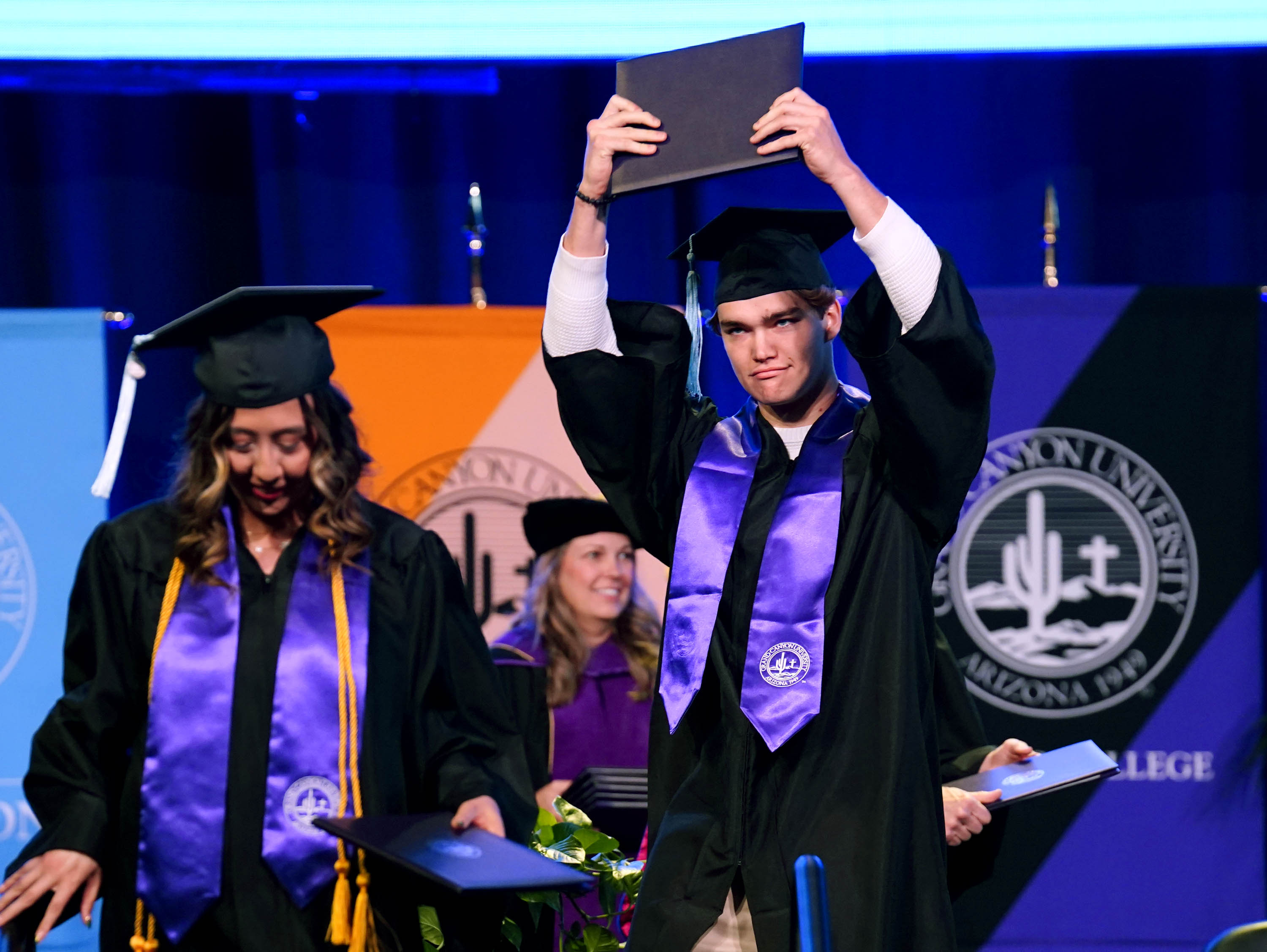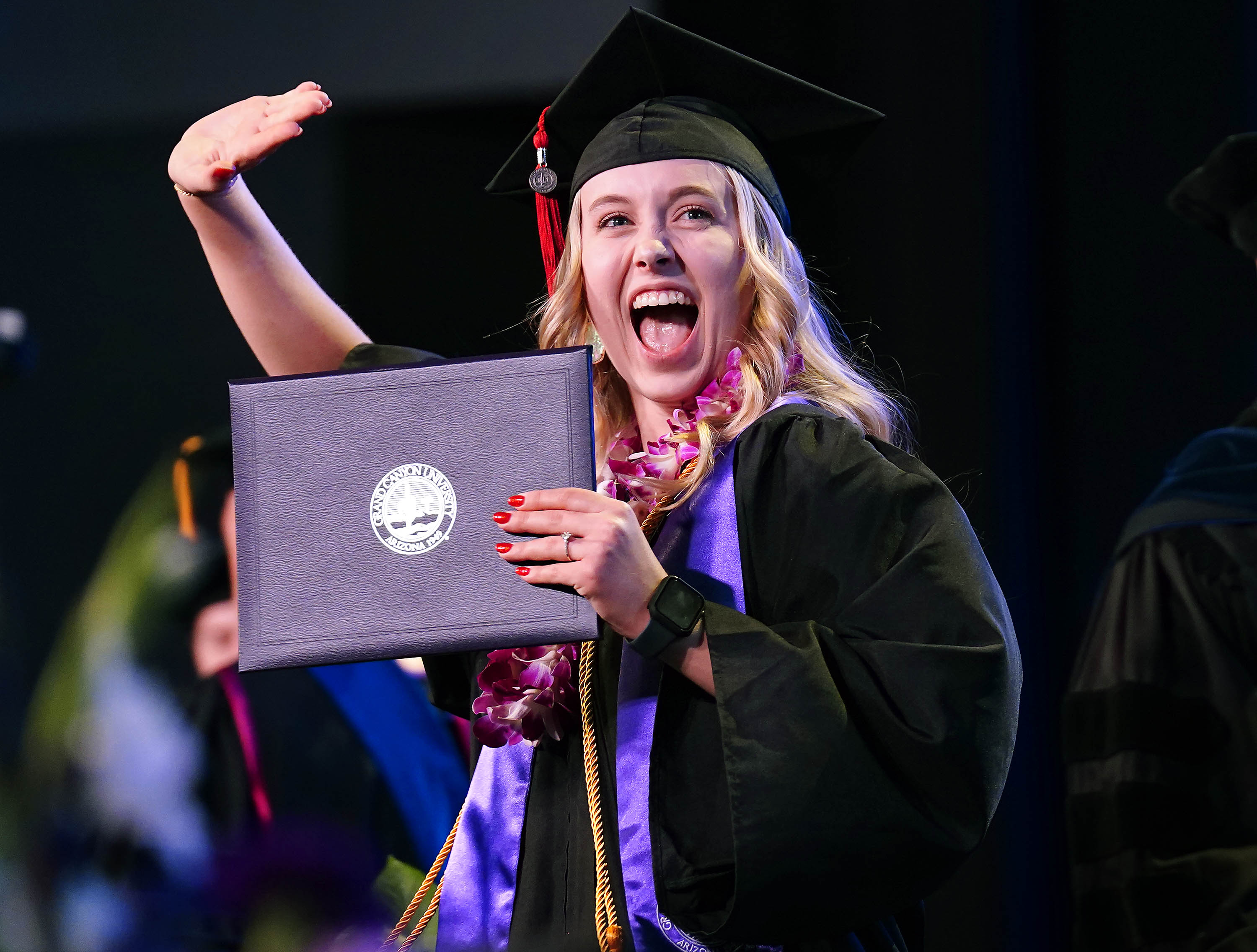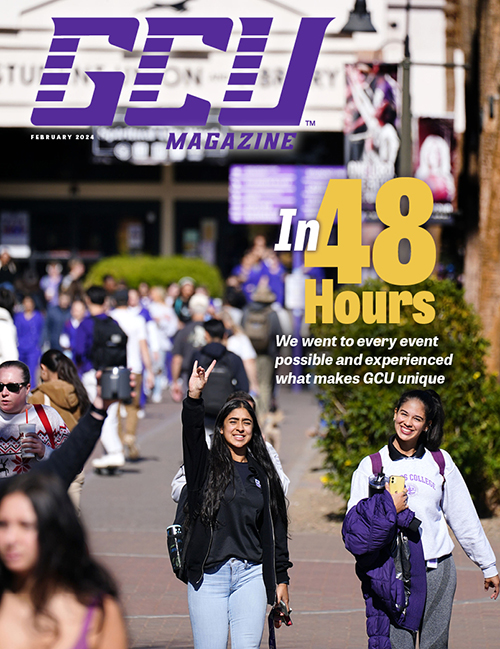
By Lana Sweeten-Shults
GCU News Bureau
Matthew Furfie watched as Remote Chaos, a sheer gem of a mechanical engineering marvel in blue, complete with some mean-looking horns, took to some volcanic rock-looking, cantankerously lumpy terrain before zipping onto a hanging wooden bridge as a water obstacle taunted the vehicle in the distance.
It might have made Furfie want to suddenly growl, “Sunday! Sunday! Sunday!” in his best monster truck show voice.
Only, it wasn’t Sunday – it was Tuesday morning, in the midst of Grand Canyon University finals week – and it wasn’t quite a monster truck show. The vehicles were less truck than they were Hot Wheels, and they were decidedly less monster and more mini. Think remote control-size, mechanical ngineering marvels.
Furfie was just one of the senior mechanical engineering students in instructor Li Tan’s Principles of Mechanical Design Class who took over the courtyard space outside of the College of Science, Engineering and Technology building to test their remote control cars.
This marked the first time for the project’s run-through since it is designed for senior mechanical engineering students -- it is the first year GCU is touting a senior engineering class, with the first cohort of engineering students set to graduate in April.
The RC vehicle design project has been something the students have been working on throughout the semester.
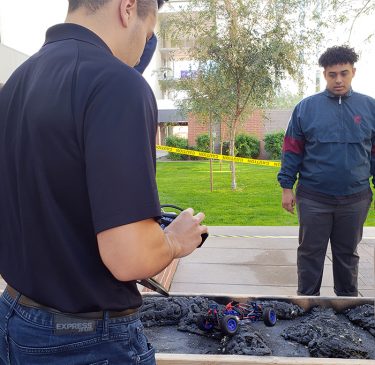
The goal, said Tan, was for student teams of four to design a remote-control car using a program called SolidWorks, then turn that design concept into reality. Students were given certain car parts, such as the motors, gears, drivetrain and suspension, but then had to use a 3D printer to print other parts of the car, such as the frame.
“They had to assemble them together and, to prove the design concepts, they had to race against each other,” said Tan, who seemed to be having too much fun for what is usually a stressful finals week.
Students had to put their vehicles through the rigor of two tests: a speed test in which the cars zip along a straight course (if they stray from the course, they lose points), and a field test with obstacles such as a simulated mountain terrain, bridges, water and grass.
“They had to pass all the different terrains to satisfy the design concept. During this process, they’re able to learn the basic principles of design,” said Tan.
Teams had the chance to test their vehicles on two testing days to get a feel for the course and to see what they might need to do to improve their designs.
Furfie said the big challenge for his team was to design a vehicle that would complete the obstacle course.
“We really designed for ground clearance,” he said, and he and his team were right. Some of the class' cars didn’t have enough ground clearance to easily make it over the mountainous terrain portion of the course. “We did pretty good. We got through the course on our first try – not as fast as we would have liked, but we were just trying to finish and make it through.”
His team spent a lot of time muscling up Remote Chaos to withstand the impact of the race and field test.
“On our first try, we hit a wall and immediately busted our car apart,” Furfie said. “So we had to go back to the drawing board and beef up those parts to make them last.”
Fellow mechanical engineering senior Jacob McMahon said, luckily, his team’s car – team members named it "Bertha" – suffered only one broken part.
“It was kind of hard to do that (make a sturdier design) because the material we were given was from the 3D printers, and those can be a little weak, especially with the way that they’re made,” McMahon said. “We had to change the dimensions of some parts to make sure they wouldn’t break because of that -- because the parts that come with the car originally, that we weren’t allowed to use, are made of better material since they’re injection-molded. But with 3D printers, we have grains we have to worry about – it’s easier to break with the grain.”
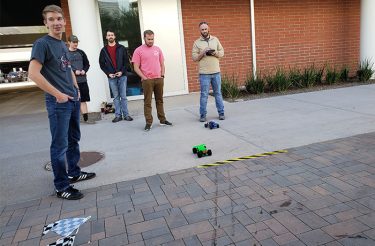
Classmate Mohamed Fareed said his team wanted to design a zippy vehicle.
“We focused on keeping the car lightweight so it can go fast, and at the same time, we added metal to keep the stability. … It was super fast,” Fareed said with a sparkle in his eye and a kind of kid-joy. He added, “We didn’t name it. But I think we’re going to name it the Ferrari. It’s THAT fast.”
His team also worked on extending the life of their remote-control car’s battery so it would have race endurance.
It was a solid design because his team’s car won the first round in the speed race, though it didn’t fare as well in round No. 2.
For McMahon, the most fun he had was “giving our own aesthetic to the car,” and for Furfie, it was “definitely racing and watching everyone try to complete the course.”
Of course, learning the mechanical engineering concepts they’ll need in their careers was invaluable, too. Many members of this senior class of engineering students look forward to walking the commencement stage in April – the first students in GCU’s new engineering program to do so.
In the end, McMahon said the project was “about the process of really building something together as a team. The mechanical design process is what this is all about.”
Contact GCU senior writer Lana Sweeten-Shults at [email protected] or at 602-639-7901.
Related content:

